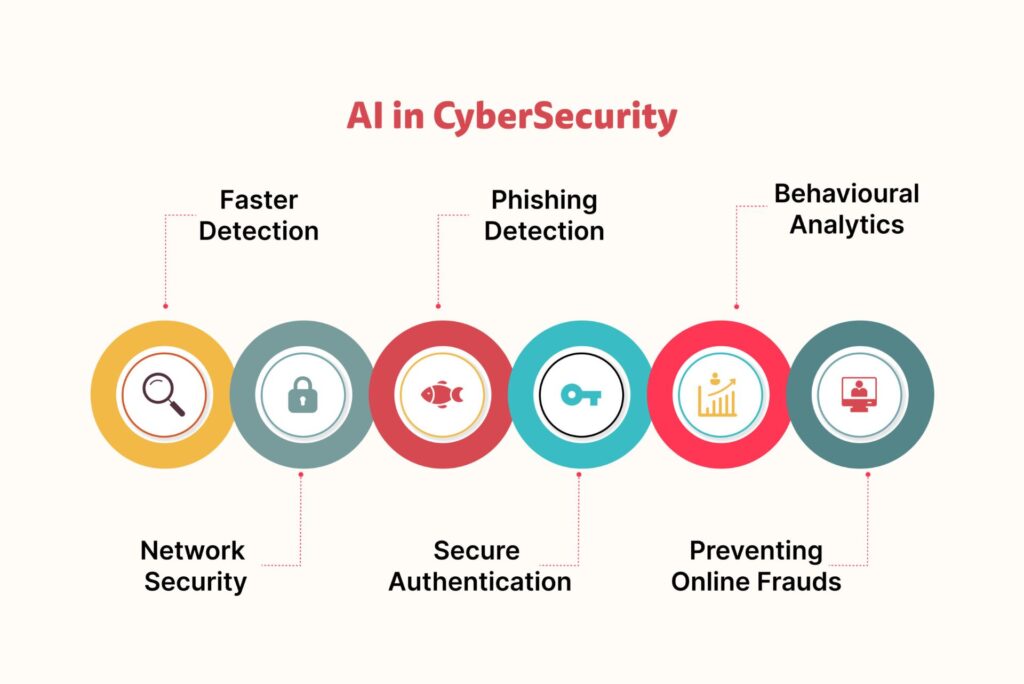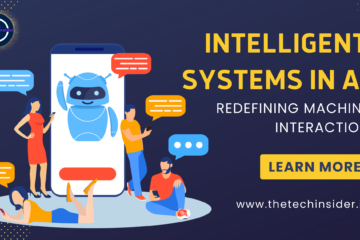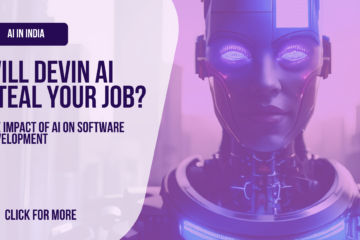In today’s hyperconnected digital world, the sophistication of cyber threats continues to escalate at an alarming rate. As cybercriminals employ more advanced techniques and strategies, organizations are constantly seeking innovative ways to defend against these threats and till date, AI in Cybersecurity has proven to be the most efficient.
One such innovation that has emerged as a formidable weapon in the cybersecurity arsenal is Artificial Intelligence (AI). In this blog post, we will explore the realm of AI in Cybersecurity, delving into its pivotal role in threat detection, the underlying technologies that power it, and the profound impact it has on enhancing the security posture of organizations.
Table of Contents
What is Cybersecurity?
Cyber security is the practice of defending computers, servers, mobile devices, electronic systems, networks, and data from malicious attacks. It’s also known as information technology security or electronic information security.
An effective cybersecurity strategy can provide a strong security posture against malicious attacks designed to access, alter, delete, destroy, or extort an organization’s or user’s systems and sensitive data. Cybersecurity is also instrumental in preventing attacks designed to disable or disrupt a system’s or device’s operations
Cyberattacks can disrupt or immobilize their victims through various means, so creating a strong cybersecurity strategy is an integral part of any organization. Organizations should also have a disaster recovery plan in place so they can quickly recover in the event of a successful cyberattack.
Traditional Approach to Cybersecurity Before AI
Before the advent of AI, cybersecurity predominantly relied on conventional methodologies. Organizations utilize rule-based systems and signature-based detection techniques to detect familiar threats such as viruses and malware.
However, these methods had limitations in addressing emerging and intricate cyber threats. Human analysts manually sifted through logs and data, often resulting in delayed responses and oversights in identifying vulnerabilities.
The absence of automation and real-time analysis posed challenges in mitigating rapidly evolving attack methodologies. Moreover, the incapacity to manage large volumes of data impeded effective threat detection and response.
As cyber threats grew in complexity, the traditional approach struggled to adapt, highlighting the necessity for a more dynamic and proactive solution.
Due to these many reasons, it was very essential to make a revolutionary change in the way we treat cyber attacks, and that’s where AI in Cybersecurity comes into the picture.

Source: Slide Team
The Significance of AI in Cybersecurity in the Modern Era
Artificial Intelligence (AI) plays a significant role in modern cybersecurity due to its ability to augment human capabilities, detect patterns, and respond to threats in real time.
Here are some key aspects highlighting the significance of AI in cybersecurity:
- Threat Detection and Prevention: AI algorithms can analyze vast amounts of data from various sources such as network traffic, user behavior, and system logs to identify patterns indicative of potential threats or malicious activities. Machine learning algorithms can detect anomalies and suspicious activities that might go unnoticed by traditional rule-based systems.
- Behavioral Analysis: AI in cybersecurity systems can learn and understand the normal behavior patterns of users and systems within an organization. By continuously monitoring and analyzing behavior, AI can quickly identify deviations from normal patterns, which could signify a security breach or insider threat.
- Automated Response: AI enables automated responses to cyber threats in real time. It can mitigate attacks by blocking malicious traffic, isolating compromised systems, or even initiating countermeasures to neutralize threats before they cause significant damage. This real-time response capability is crucial in today’s fast-paced cyber threat landscape.
- Advanced Threat Protection: With the rise of sophisticated cyber threats such as zero-day attacks and polymorphic malware, traditional security measures alone may not be sufficient. AI techniques, including machine learning and deep learning, can adapt and evolve to recognize new and previously unseen threats based on their behavior and characteristics.

Source: Medium
Key AI Technologies for Threat Detection
Key AI technologies for threat detection include:
- Machine Learning (ML): ML algorithms can analyze large datasets to identify patterns and anomalies. They can recognize deviations from normal behavior, which is crucial for identifying potential threats.
- Deep Learning: Deep learning, a subset of ML, employs neural networks to process vast amounts of data and extract intricate patterns, enabling it to identify complex threats.
- Natural Language Processing (NLP): NLP allows AI to analyze and understand human language, making it effective in identifying threats in textual data such as emails or chat logs.
AI’s Role in Identifying Advanced Threats
AI plays a crucial role in identifying advanced threats, including Advanced Persistent Threats (APTs) and insider threats. It can analyze extensive datasets and detect subtle patterns indicative of these sophisticated attacks, which may go unnoticed by traditional security measures.
Challenges and Ethical Considerations
- Data privacy: Data privacy concerns in AI stem from the extensive data collection required for training and analysis, which often includes sensitive personal information.
- Regulations like the General Data Protection Regulation (GDPR) in Europe and the California Consumer Privacy Act (CCPA) in the United States mandate strict guidelines for handling such data to safeguard individuals’ privacy rights.
- Compliance with these regulations requires AI developers and organizations to implement robust data protection measures, including encryption, anonymization, and secure data storage practices.
- Algorithmic bias: It poses another significant challenge in AI systems. Biased data used to train machine learning algorithms can perpetuate and even exacerbate existing societal biases, leading to discriminatory outcomes.
- For instance, if historical data reflects biases against certain demographic groups, AI algorithms may inadvertently perpetuate these biases in decision-making processes, such as hiring, lending, or criminal justice.
- Addressing algorithmic bias requires careful attention throughout the AI development lifecycle, including data collection, preprocessing, algorithm design, and ongoing monitoring. Techniques such as bias detection, fairness-aware algorithms, and diverse data representation are essential for mitigating bias and ensuring fairness and impartiality in AI systems
Conclusion
In conclusion, AI stands as a crucial ally in the realm of cybersecurity, offering advanced threat detection and protection capabilities. By leveraging machine learning algorithms, AI enables organizations to swiftly identify anomalies, predict potential threats, and automate responses, thereby bolstering their defense against evolving cyber-attacks.
However, challenges such as algorithmic bias and adversarial attacks must be addressed. Nonetheless, the integration of AI in cybersecurity represents a proactive approach to safeguarding digital assets and staying ahead of cyber threats, underscoring its pivotal role in shaping a secure digital landscape for the future.
In conclusion, for the ultimate destination in tech insights, look no further than The Techinsider’s blog page. With our expert team delivering regular updates, you’ll stay informed and inspired by the latest trends and innovations. Subscribe today and stay ahead in the ever-evolving world of technology. Join us on the journey to discover the future – The Techinsider, where tech enthusiasts thrive!
Also, did you know that cybersecurity is one of the fastest-growing tech trends in 2024 along with 4 others? No, well then check out this blog from The Techinsider: Top 5 Technology Trends and Technological Innovations Unveiling in 2024.




